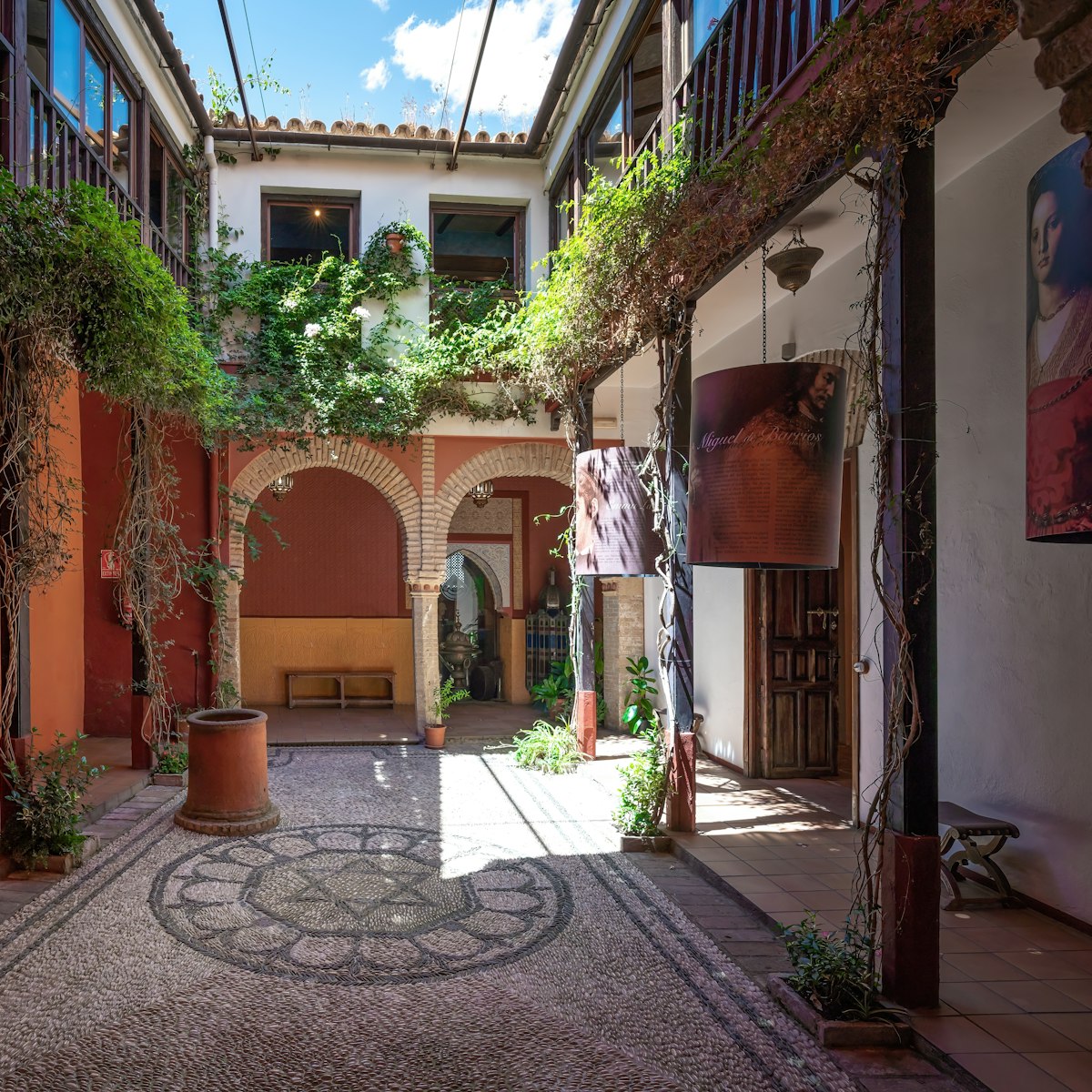Eight kilometres west of Córdoba stands what's left of Medina Azahara, the sumptuous palace-city built by Caliph Abd ar-Rahman III in the 10th century. The complex spills down a hillside, with the caliph’s palace (the area you visit today) on the highest levels overlooking what were gardens and open fields. The residential areas (still unexcavated) were set away to each side. A fascinating modern museum has been installed below the site.
Legend has it that Abd ar-Rahman III built Medina Azahara for his favourite wife, Az-Zahra. Dismayed by her homesickness and yearnings for the snowy mountains of Syria, he surrounded his new city with almond and cherry trees, replacing snowflakes with fluffy white blossoms. More realistically, it was probably Abd ar-Rahman’s declaration of his caliphate in 929 that spurred him to construct, as caliphs were wont to do, a new capital. Building started in 940 and chroniclers record some staggering statistics: 10,000 labourers set 6000 stone blocks a day, with outer walls stretching 1518m east to west and 745m north to south.
It is almost inconceivable to think that such a city, built over 35 years, was to last only a few more before the usurper Al-Mansur transferred government to a new palace complex of his own in 981. Then, between 1010 and 1013, Medina Azahara was wrecked by Berber soldiers. During succeeding centuries its ruins were plundered repeatedly for building materials.
From the museum, where you arrive and get tickets for the site (and where you must park if coming in your own vehicle), a shuttle bus (lanzadera; adult/child/senior €2.10/1.50/1.50 return) takes you 2km up to the top of the site. The visitors’ route then leads down through the city’s original northern gate. Highlights of the visitable area are the grand, arched Edificio Basilical Superior, which housed the main state admin offices, and the Casa de Yafar, believed to have been residence of the caliph's prime minister. The crown jewel of the site, the royal reception hall known as the Salón de Abd ar-Rahman III (or Salón Rico), has been closed for restoration since 2009 (with no expected completion date at the time of research). This hall has exquisitely carved stucco work and is said to have been decorated with gold and silver tiles, arches of ivory and ebony, and walls of multicoloured marble.
The museum takes you through the history of Medina Azahara, with sections on its planning and construction, its inhabitants and its eventual downfall – all illustrated with beautifully displayed pieces from the site and interactive displays, and complemented by flawless English translations.
Drivers should leave Córdoba westward along Avenida de Medina Azahara. This feeds into the A431 road, with the turn-off to Medina Azahara signposted after 6km.
A bus to Medina Azahara (adult/child €9/5 return including the shuttle from museum to site and back) leaves from a stop on Glorieta Cruz Roja near Córdoba's Puerta de Almodóvar at 10.15am and 11am Tuesday to Sunday, plus 2.45pm Tuesday to Saturday from mid-September to mid-June. You can get tickets on the bus, or in advance at tourist offices. Buying in advance is sensible for weekends and public holidays. The bus starts back from Medina Azahara 3¼ hours after it leaves Córdoba.
An interesting alternative way of getting here is on an electric-bicycle tour with Elektrik.es. English- or Spanish-language guided visits with Córdoba Visión are offered for €20 (children €10), using the 10.15am bus service; get tickets in advance through its office or tourist offices.








